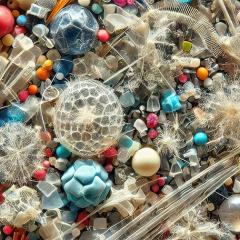Micro plastics (fragments and fibres) pollution in water: Issues and treatment using foam fractionation/froth flotation
Micro and nano plastics (MNPs) entering ecosystems due to coastal, industrial, and domestic activities, become a threat to the environment. Developing a reliable and fast MNPs synthesis method is vital for conducting quality experiments to understand the fate and behaviour of MNPs in the environment. The MNPs reference materials that are produced for instrument calibration purposes do not fit the criteria to mimic particles produced in nature. Therefore, the initial scope of the research is on finding and developing a suitable methodology for producing synthetic MNPs in the laboratory environment. The direct dumping of sludge/biosolids from wastewater treatment plants into landfills becomes a source of microplastic leachates, which eventually find their way into the wastewater treatment systems. There is a lack of comprehensive study on the removal efficiency of microplastics from the leachate treatment plants. Laundry wastewater is considered a major pathway for microplastic fibres entering wastewater treatment plants. Currently, there is no active system for treating laundry wastewater, and untreated wastewater containing a significant amount of microplastic fibres flows directly into creeks and rivers. Given their low density and hydrophobic properties, the foaming systems are seemly low-cost treatment systems for the removal of microplastics from aquatic systems. Investigating various flotation parameters, including microplastic properties, operation conditions and surfactants used is needed to best design the flotation setup. The overall aim of this research is to understand: i) the application of foam flotation for the removal of microplastic fragment and fibre types from the landfill leachates and laundry wastewater systems,
ii) compare performance of synthetic and natural surfactant solutions for microplastics flotation and,
iii) develop the experimental conditions to improve the flotation performance.
Please note this is a PhD student progress review presentation.

